The timeless beauty of Damson blossom
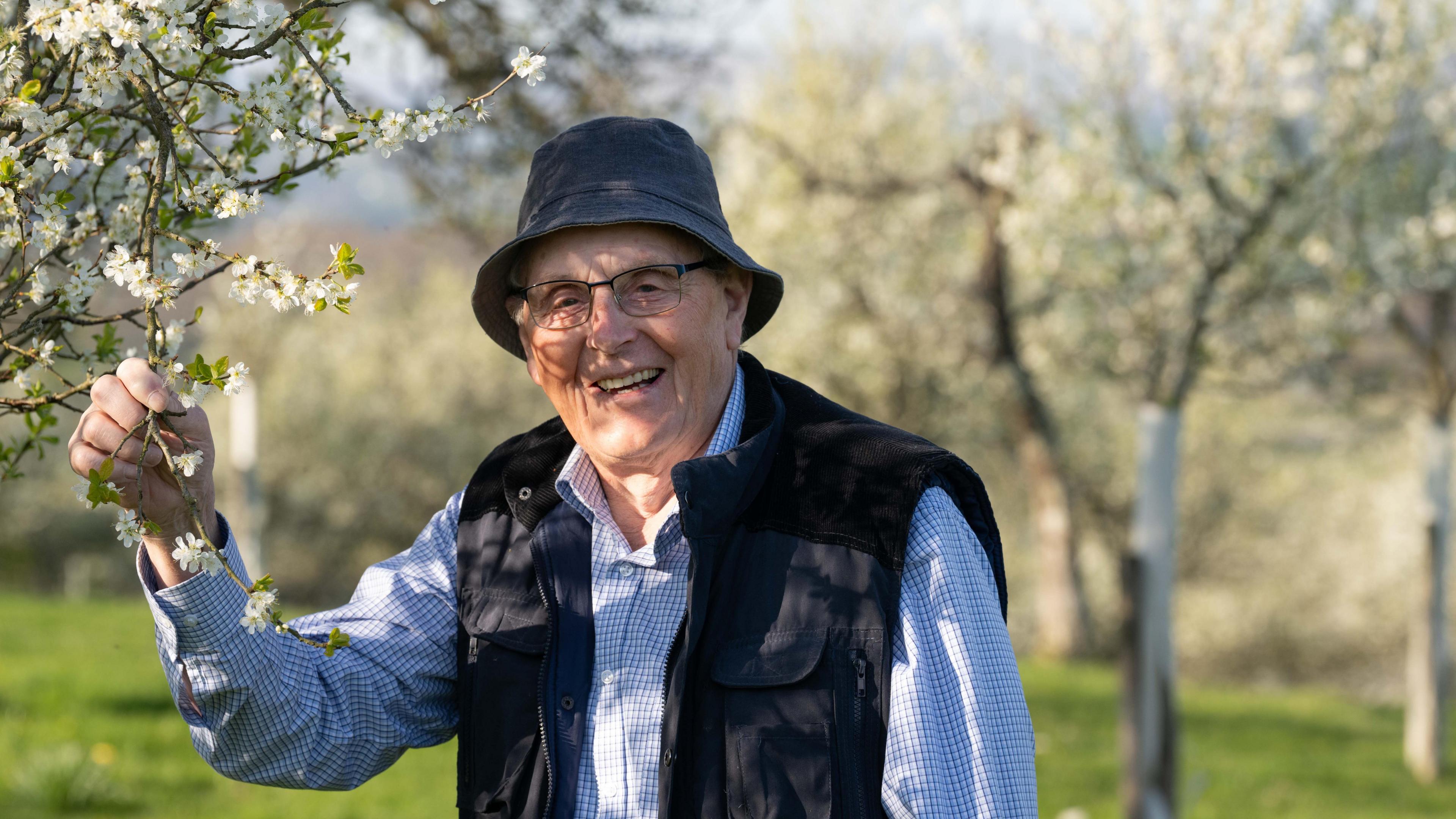
Hartley Trotter is still growing damsons at the age of 86
- Published
With their white blossoms blowing in the breeze, damson trees mark spring across the south of Cumbria. For those living here, they are not just a beautiful sight but a reminder of a once-thriving industry using the fruit. While in decline for decades, there are hopes of a resurgence.
Hartley Trotter remembers picking his first crop as a boy, when everyone pulled together while the country was at war.
The fruit from the tree - said to originate from the area around Damascus - was often used to make jam.
"Every damson was essential to feed the troops," he said.
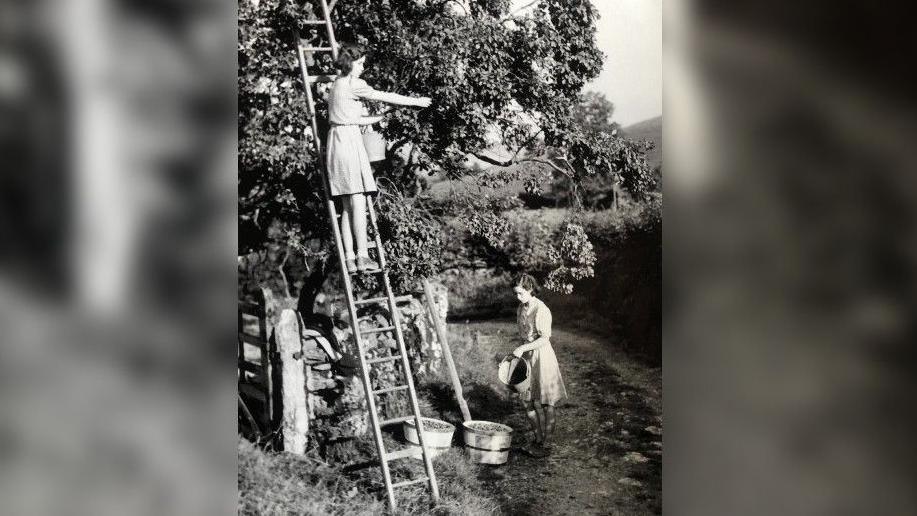
Damson picking still has to be done by hand
The 86-year-old is from a farming family in the Lyth Valley stretching back generations.
"The damson crop has always been important to our lives, all the farms here had their orchards.
"But then it went into recession, there were imported fruits, they couldn't compete, and from the 1970s there was little demand for damsons.
"It was more economic to have milk cows and such like, and the small farms started amalgamating."
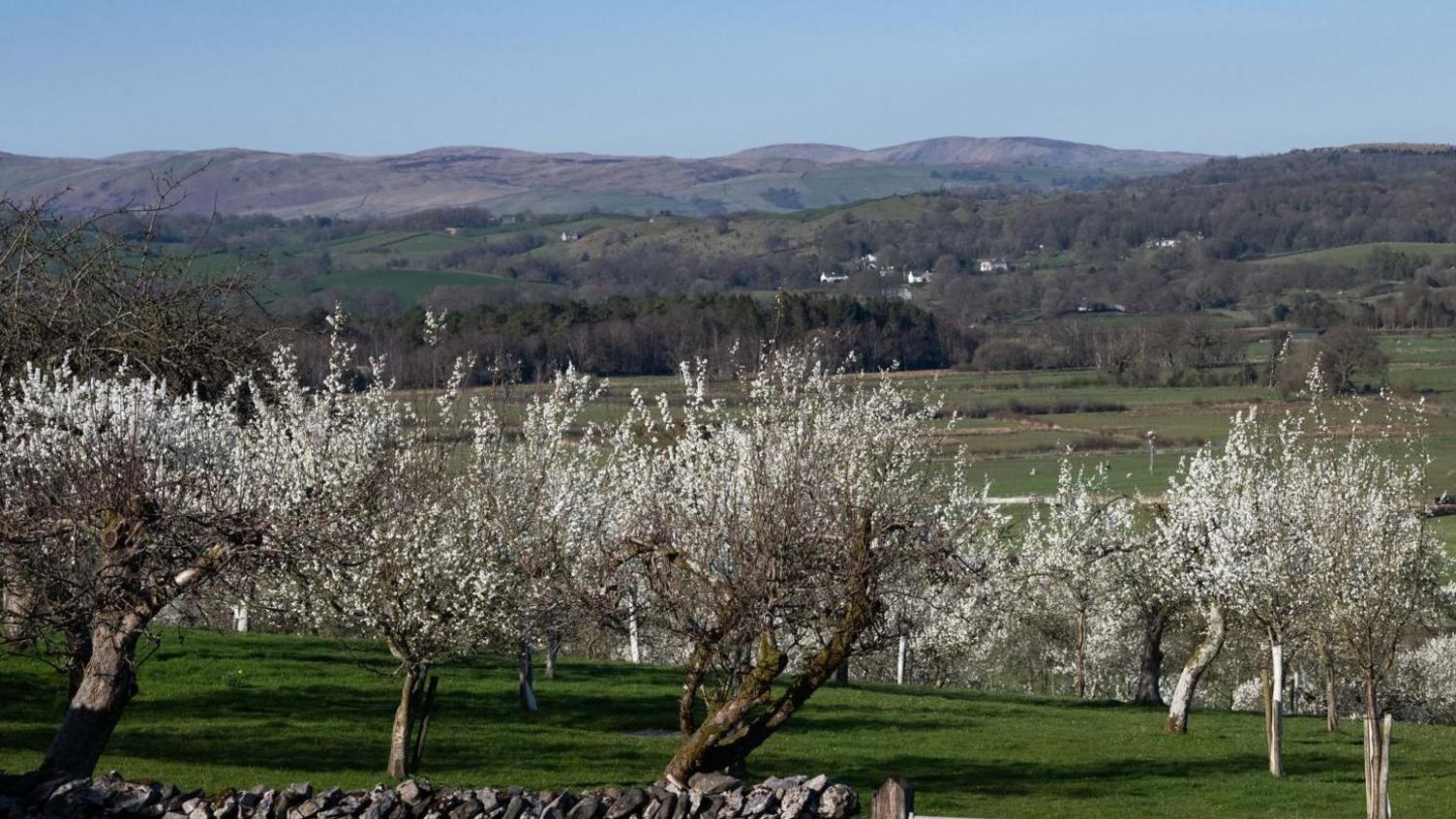
Damson trees blossom in April, with the fruit harvested late August to mid-September
The Westmorland Damson Association was set up in the 1990s to reverse the decline of the fruit.
It aims to "enhance the economy and landscape" of traditional damson-growing areas in Cumbria.
"We buy [the crops from local farms] every year and sell them on," said chairman Mark Basey-Fisher.
"They are used to make jams, ice cream, gin - there's even a place which makes damson beer.
"And in season you'll still see people selling them from stalls by the side of the road - there's nothing like a damson."
They are being celebrated at the annual Damson Day Festival at the Westmorland County Showground.
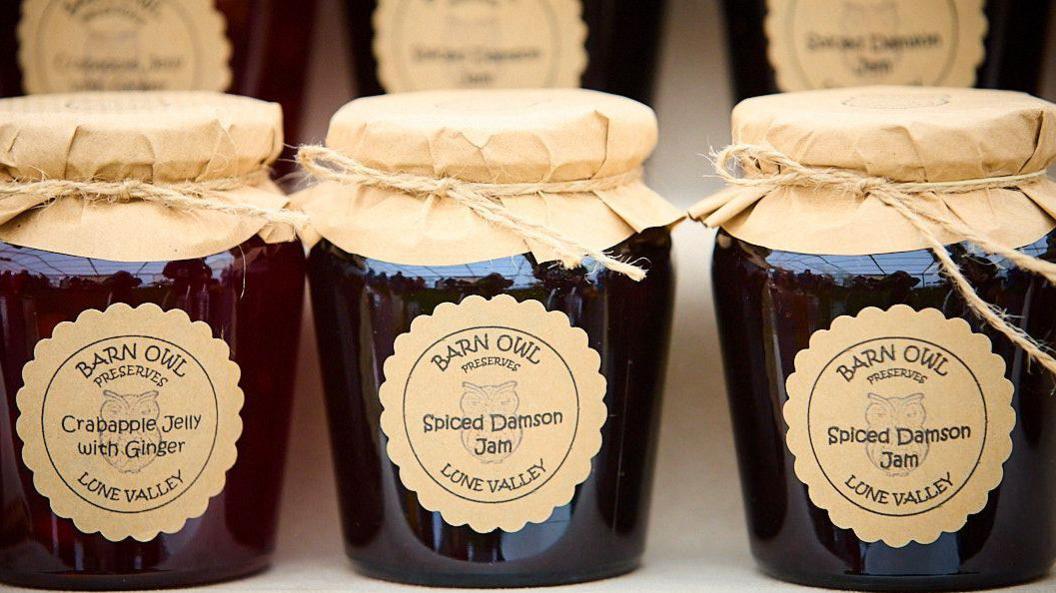
Damsons are now in demand for local artisan products
Hartley said damsons used to be a very important part of the economy, with 18 farms in the valley, all with orchards.
"They were very much family affairs," he recalled.
"People used to take tons of them to the market on horses and carts."
He has hopes the association can create a resurgence of interest.
"I'm sure they're doing their level best," he said.
"And now we've got local people making things like pies and chutney, there's even a cheese, so many outlets for it now.
"One hopes that with all the different uses, they have a chance of surviving."
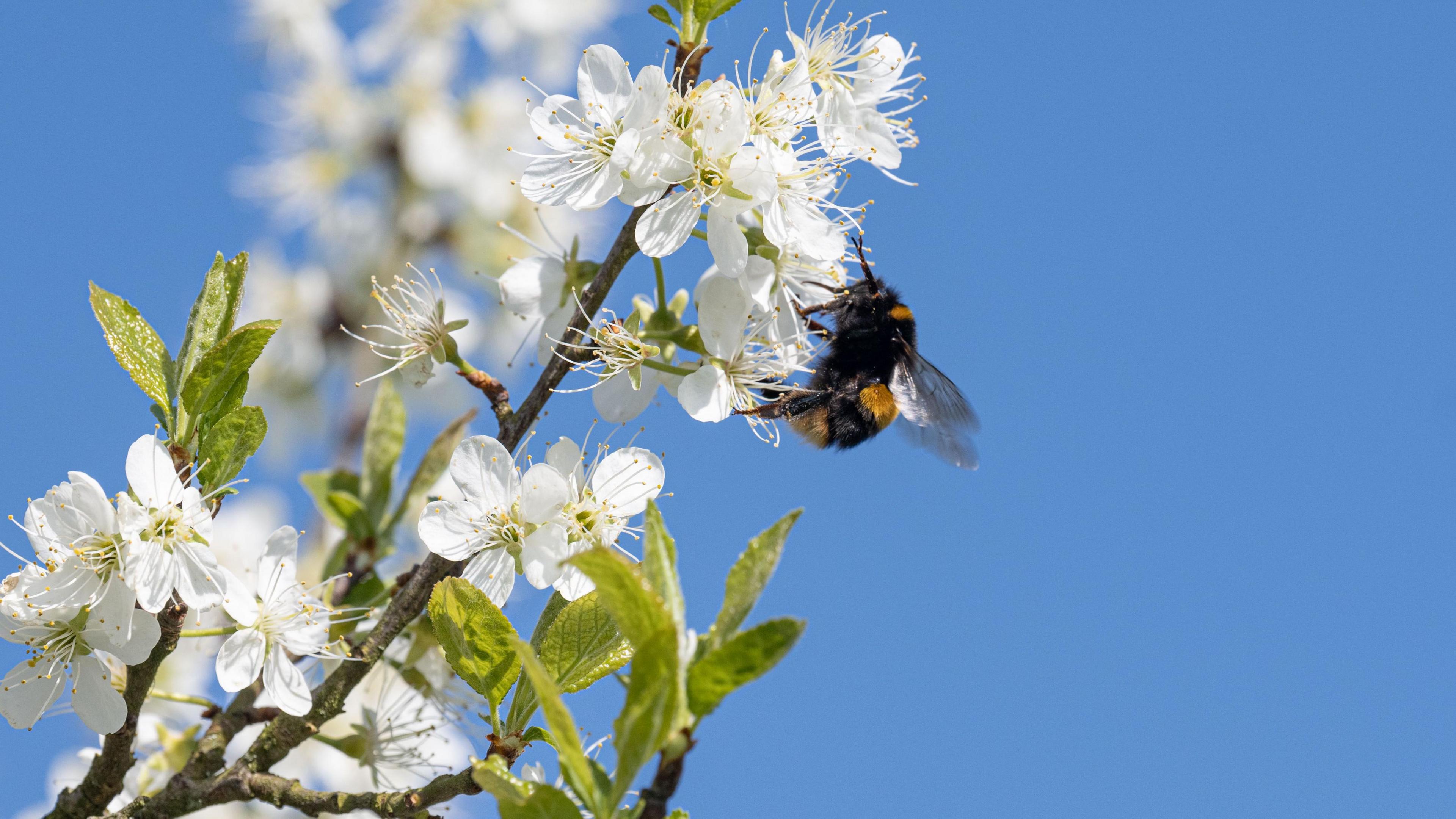
Damson orchards attract insects such as bumble bees
His farm, near Howe, still has an orchard and the damsons are harvested by hand, as they always have been.
Hartley's daughter also takes a break from her job in London to help out.
While he is still involved, he has been banned from climbing a ladder, after a fall from one put him in hospital six years ago.
"I just sit there and sort out the picked ones, get rid of leaves etc, it's lovely to be out in the open air listening to the birds, and such a sociable thing."
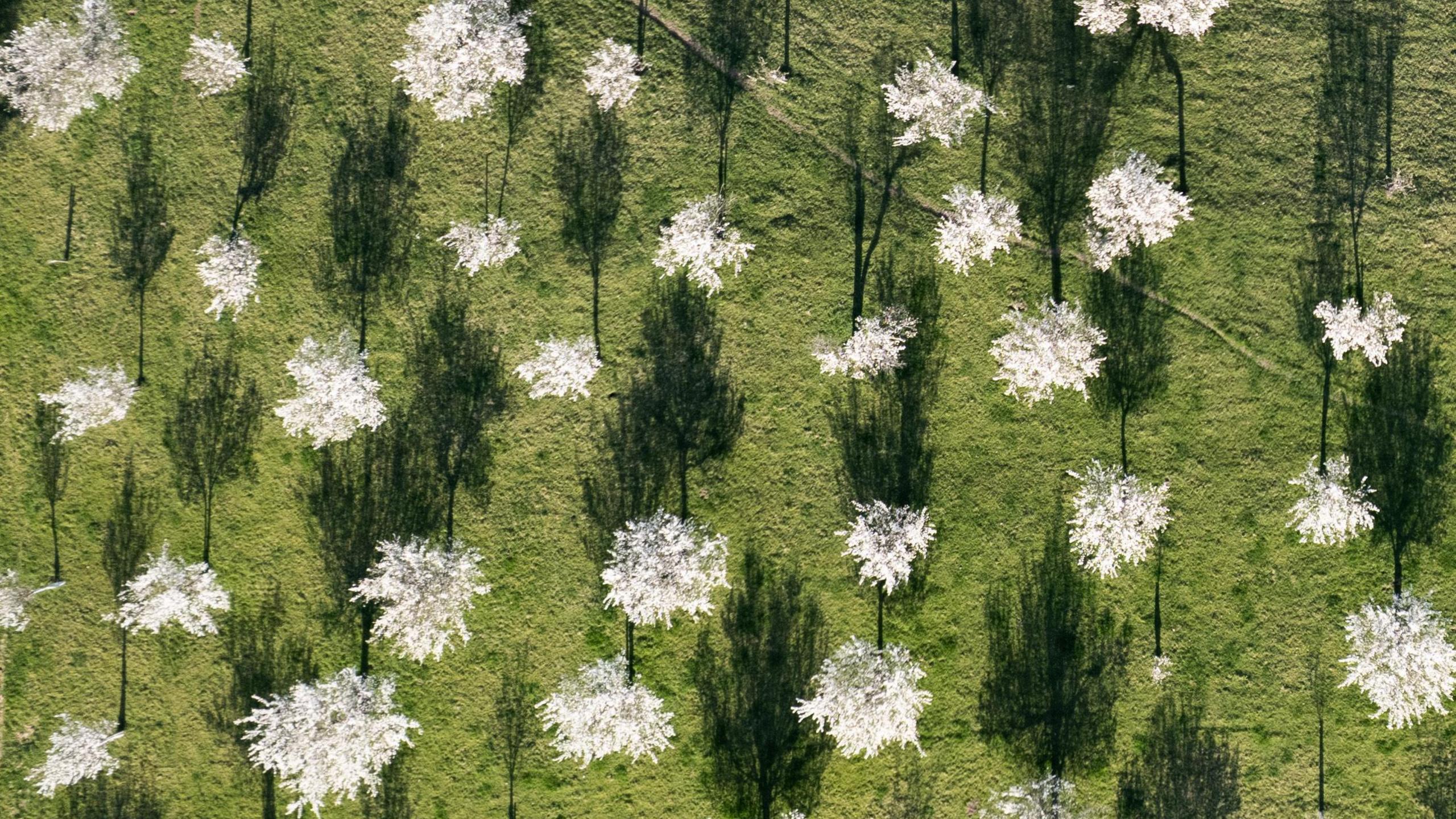
At one time the damson orchards were a visitor attraction
Despite the difficulties involved in growing damsons - they can fall prey to frost and disease, and there are health and safety issues around the harvesting method - Hartley continues to maintain the orchard and plant new trees.
"It's not just for the crop, but also because the blossom is so beautiful," he said.
"It's such a sight for two or three weeks a year - at one time this part of the valley had coach loads of people from Blackpool and Morecambe coming through just to look at it.
"And here I am now sat in my window looking out at the trees in bloom, the sun is shining, and everything is hunky dory."
Follow BBC Cumbria on X, external, Facebook, external, Nextdoor and Instagram, external.
Get in touch
Do you have a story suggestion for BBC Cumbria?
- Published11 October 2022
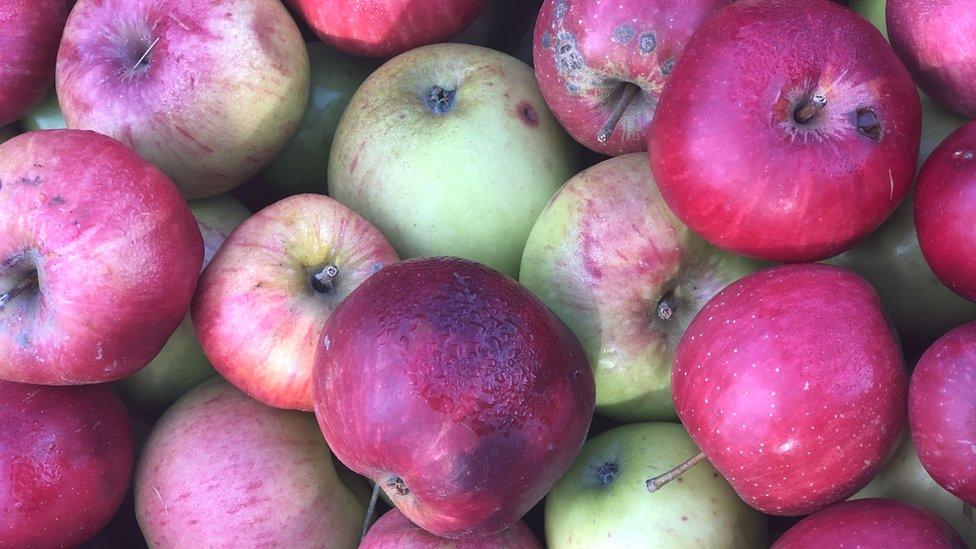
- Published18 August 2024
